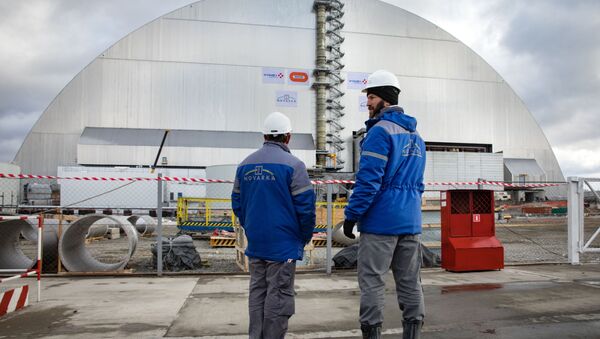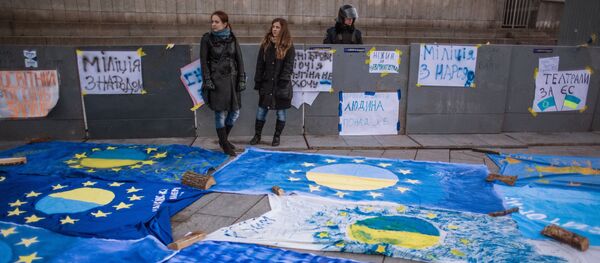Ukraine’s Minister of Ecology, Ostap Semerak, said that Engie SA would begin pre-engineering, funded by the French government, and would present the results by the end of 2017.
According to Semerak, Ukraine has chosen France to carry out this project because of its great experience in the sphere of nuclear energy.
"They approached us after we announced our intention to develop renewables in Chernobyl," Semerak told Bloomberg.
As of today more than 60 companies have discussed different schemes for using the notorious "Exclusion Zone" surrounding the epicenter of the Chernobyl nuclear disaster. The Engie SA representative confirmed that the talks were being held, but did not discuss the size of the project.
Chernobyl was the scene of the world’s worst nuclear accident in 1986 and the 2,600 km2 (1,004 square mile) Exclusion Zone has been left wild for the past 30 years. However, the transmission lines to take the electricity to households and factories remain in place.
Radio Sputnik discussed the issue with Jenny Chase, Head of Solar Analysis at Bloomberg New Energy Finance.
"The fact that it is not in use and it already has a connection to the Ukrainian grid means that it is actually quite a suitable area. It does not really matter how long it has been out of use; the ground is still suitable for the solar panels," Jenny Chase told Sputnik.
According to Bloomberg, Ukraine’s appeal as a renewable energy market might also lie in its feed-in tariffs. Most other markets have switched to competitive auctions, which have proved successful at driving down the price of clean power and lessening the burden on state budgets and consumers. Ukraine’s tariff varies depending on the size of the project and the year, but the highest is 15 euro cents per kilowatt-hour.
That’s 74 percent higher than the average levelized cost of solar energy in Europe, which factors in the end-to-end costs of building the plant. It’s currently at 8.6 euro cents per kilowatt-hour, according to data from Bloomberg New Energy Finance.
"Ukraine benefits as it gets solar power. My personal opinion is that it is quite expensive, but then the cost of capital is very high in Ukraine, so that may explain the costs," Jenny Chase told Sputnik.
The expert also commented on the low level of trust from investors, linking it not to this specific project, but more to Ukraine as a whole, which is perceived as somewhat unstable.
In the past, she said, when countries have set up for solar energy, they have later backed out — Spain, Bulgaria, Romania. There may be such a risk, or simply one of geopolitical instability, which might contribute to the difficulty to pay under Ukraine's future obligations.
However, solar, she said, is not rocket science. Solar does not involve ongoing maintenance work. She further ventured that it would be a suitable use of the land.
In the aftermath of the disaster, the Exclusion Zone has developed into one of Europe's largest de facto wilderness preserves; in the wake of humanity, it has become home to herds of wild boar, wolves, elk, and deer. It is even home to rare Przewalski’s Horses, a wild equine species introduced in the 1990s, and endangered European Bison.
Any attempt to re-purpose the overgrown forest that took root in the ashes of Chernobyl is certain to raise questions among other environmentalists.




